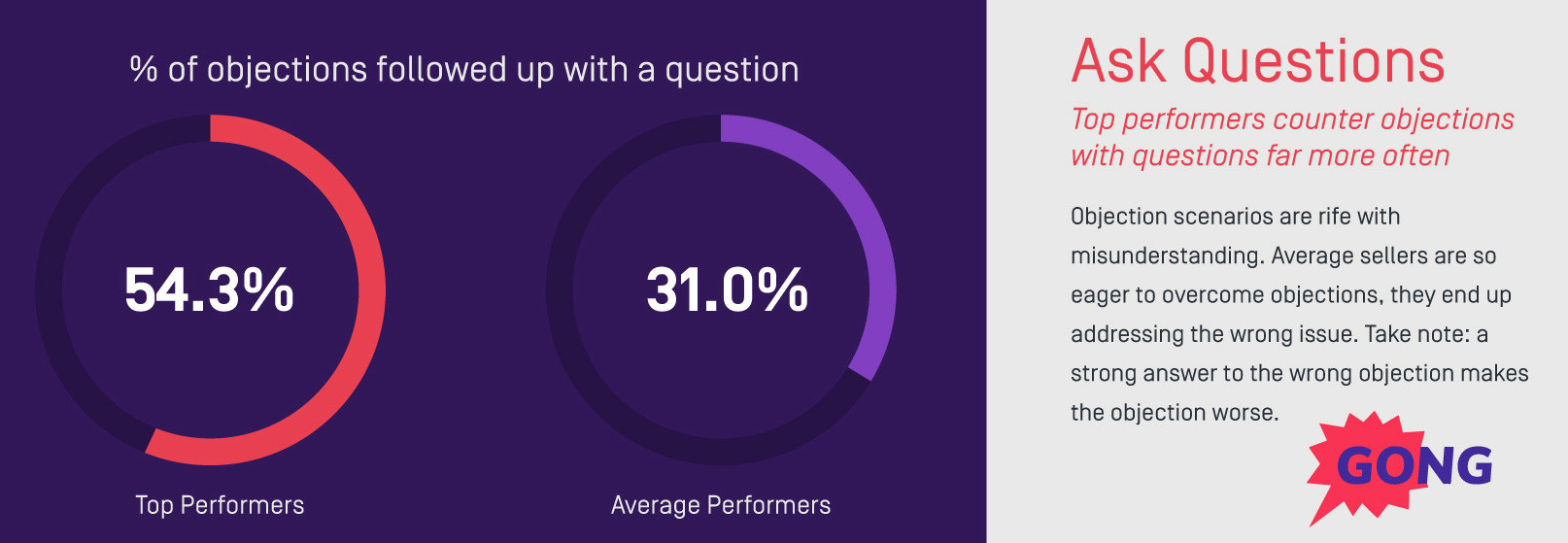The Critical Factor in Overcoming Your Customer’s Objection
“It’s too expensive”
If you’ve been in sales longer than five minutes, chances are you’ve heard a customer raise this objection sometime between minutes one and four of your tenure. And like most sellers, when you heard it for the first time your mind likely began conjuring up all manner of defensive tactics, flexible payment terms, and counter-questions about the customer’s budget. After all, if you don’t satisfy the cost objection, you won’t get the deal done.
If only it were that simple.
Unfortunately, objections are like icebergs. Typically what gets vocalized only represents a fraction (if any) of the underlying concern.

That means that in order to fully address the objection to the customer’s satisfaction, you need to understand the critical underlying concept upon which the foundation of the objection is based; the intent.
An Expensive Exercise
Here’s a little exercise for you. Write down the phrase “It’s too expensive ______”, and before reading on, fill in that blank with as many permutations of that objection as you can.
Chances are you came up with options like, it’s too expensive…
- …for our budget
- …compared to what it would cost to build it ourselves
- …considering we’re getting by ok on what we’re doing now
- …for the value we would get from it
- …for the size of the problem we’re looking to solve
- …and I really think we need to do more research into the core issue before exploring any more solutions
- …compared to similar competitive solutions
- …compared to what we’re spending on [this other thing]
- …and I heard from another customer that your product doesn’t work the way you say it’s supposed to
- …compared to what my buddy (who works at the company whose product I secretly want to buy) quoted us.
Now looking through your list of objections, try to understand what the buyer’s intent was behind each one. For example, was the customer not yet convinced of the value of your solution? Were they trying to kick the can further down the road and differ the selection of a vendor until a later date? Perhaps the buyer preferred a competitive solution and no matter what your price, they would find a reason not to buy it. Regardless of the stated objection, before you attempt to address the objection it’s important as a seller to ensure you’re clear on the intent.
In fact, when it comes to addressing customer objections, a study by the team at Gong found that top performers ask follow-up questions 54 percent of the time in order to make sure they’re responding to the correct root intent, versus 31 percent for average performers.

Most objections fall into one of five intent categories, ranging from the generally logical and complementary to the highly emotionally charged and antagonistic. Becoming familiar with these categories can help the modern seller more quickly triage the intent and select a suitable response type.

If you’re curious to go deeper (which I hope you are!), in my Ultimate Guide for Handling Objections I discuss these objection types in more detail, provide real-world examples of each, and outline the best strategy for responding.
We promise never to send you junk or share your email! Just helpful sales insights.














Leave a Reply
Want to join the discussion?Feel free to contribute!